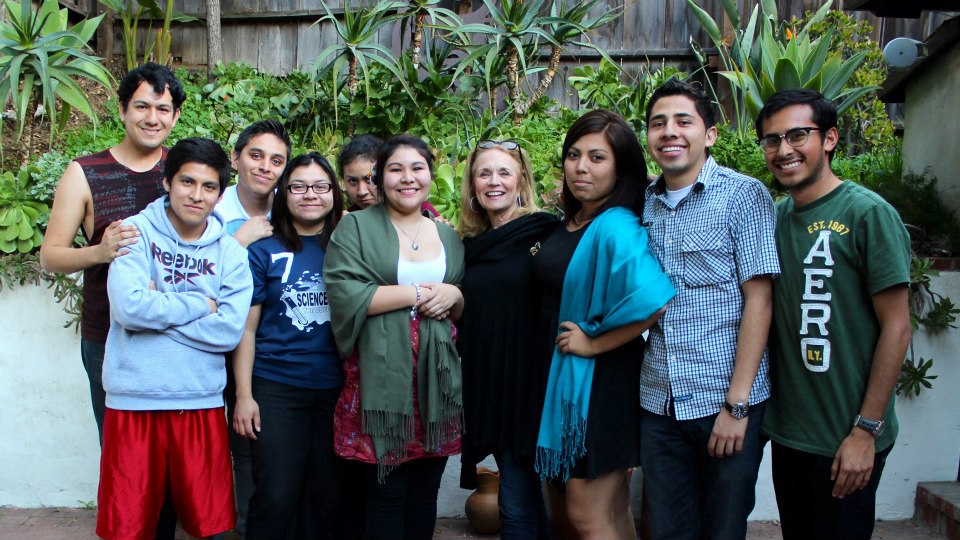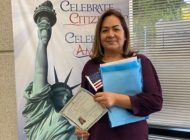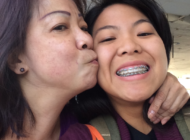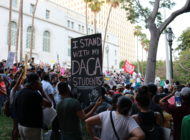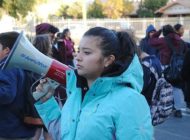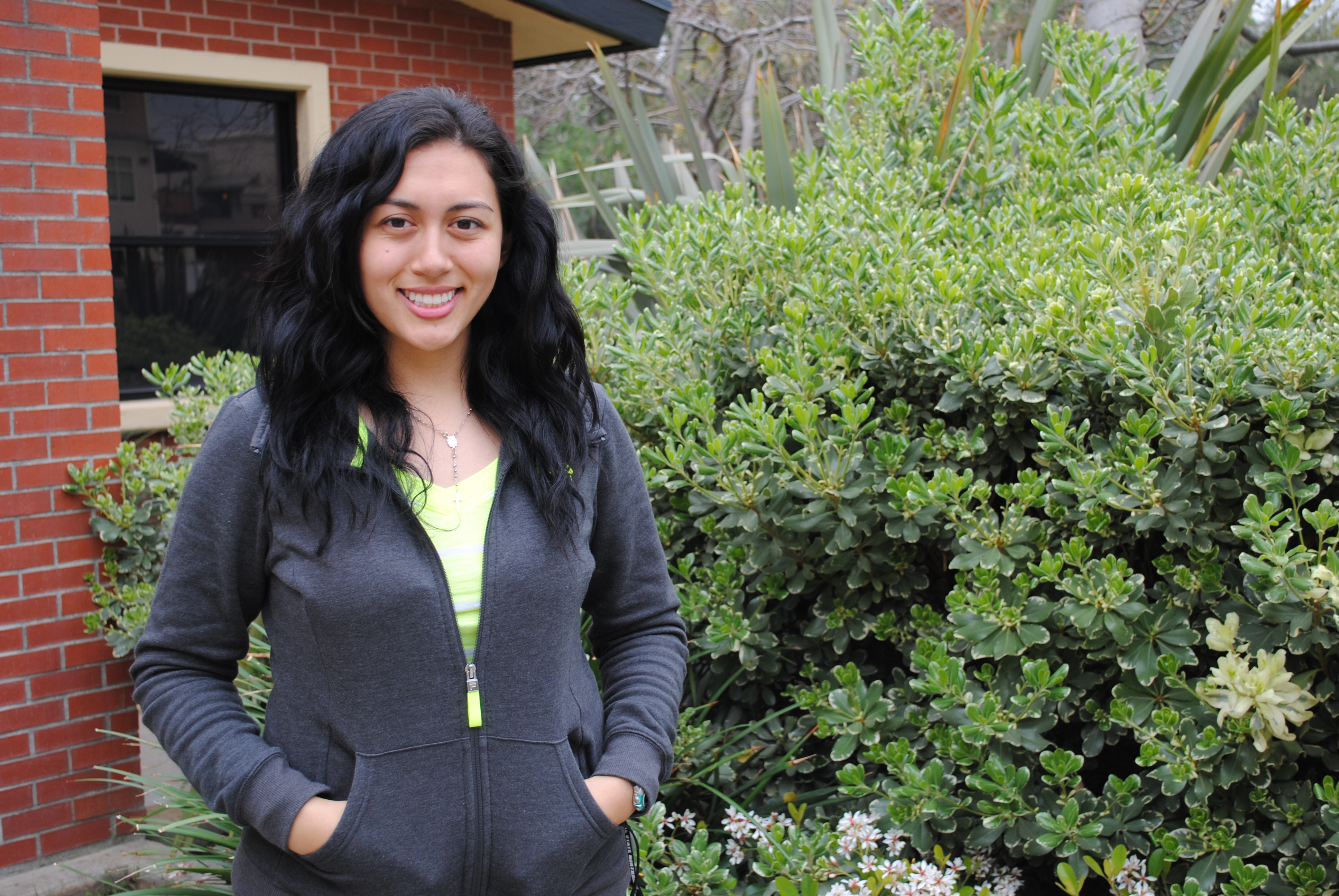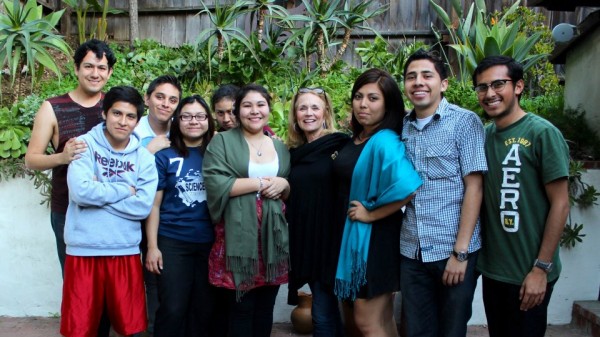
“I don’t have a typical immigration story,” Delgadillo said. “I came here legally with a valid visa on an airplane, but stayed past my visa’s expiration date.”
EL NUEVO SOL
After 9-years of living in the United States and hearing countless of stories about undocumented students “coming out,” Raul Delgadillo finally felt empowered to share his own immigration status with friends.
In December of 2010, Delgadillo messaged friends through Facebook and revealed a secret of his own.
He was undocumented.
In December of 2010, the Senate blocked the DREAM Act, which would have paved the way to citizenship for certain undocumented immigrants who came to the United States as children, completed two years of military service or college and met other requirements. About 2.1 million undocumented immigrants between the ages of 18 and 34 would have qualified for the DREAM Act legislation, according to a 2010 study from the Migration Policy Institute.
By revealing his undocumented status, Delgadillo hoped to encourage friends to call their representatives and senators, and pressure them to pass the DREAM Act.
An 18-year-old at the time, Delgadillo said he was nervous about how friends would react. “Some people didn’t respond, and others were like ‘I didn’t know you were undocumented.’ I didn’t get any negative feedback because I was careful with who I messaged.”
When Delgadillo’s friends heard his story, it was hard for them to grasp the idea that he was undocumented because he speaks English very well and has lived in the United States the majority of his life.
Growing up, Delgadillo’s mother and close friends who knew about his immigration status told him not to tell anyone, because he could be deported or something bad could happen to him.
“I don’t have a typical immigration story,” Delgadillo said. “I came here legally with a valid visa on an airplane, but stayed past my visa’s expiration date.”
Delgadillo is not alone.
About 45 percent of undocumented immigrants in the United States arrived with an authorized visitor’s visa, and overstayed their visit, remaining in the United States illegally without proper documents, according to a 2006 Pew Hispanic Center study.
The figures are the most recent on visa overstays and mixed-status families, said Molly Rohal, communications associate for the Pew Research Center. The data are several years old at this point, Rohal said.
MIGRATING TO THE UNITED STATES
Delgadillo was born in Cuernavaca, Morelos, México. At 9-years-old, Delgadillo came to the United States with his mother for the first time with a legal visa. His mother’s Visa was good for 10 years. Delgadillo’s Visa was good for 6 months.
They vacationed in Southern California and visited tourist attractions such as parks, museums, and Disneyland.
“We liked it here, and my mom asked me if I wanted to stay. I didn’t think of the implications of staying here and living here – not being able to visit my family in México, not being able to get a driver’s license or work,” Delgadillo said.
Even after 13 years of living in the United States, Delgadillo is still faced with the possibility of his mother or himself being deported.
Delgadillo has a mixed-status family. His little brother and stepfather are citizens of the United States, but his mother and himself are not.
“Having a mixed-status family really complicates things. Families can become separated or someone can qualify for something, but the rest of the family doesn’t, causing some to get residency or citizenship and the other family members remaining undocumented,” said Luis Ojeda, statewide coordinator for California Immigrant Youth Justice Alliance.
About 9 million people are currently living in mixed-status families, with at least one United States born adolescent and one parent without legal status, according to a 2011 study by the Pew Research Center.
“It’s really hard to have a family that has different immigration statuses,” Delgadillo said.
“That’s one of the reasons why I joined the San Fernando Dream Team, so I could learn what could be done when deportations happen and to educate myself on this topic.”
Now 22, Delgadillo is San Fernando Dream Team’s educational and outreach coordinator. He connects with different organizations to plan events and workshops.
Delgadillo is also a beneficiary of Deferred Action for Childhood Arrivals (DACA), a 2012 initiative started by President Barack Obama via executive authority.
DACA applies to some undocumented immigrants mostly between the ages 15 and 30 who came to the United States as children and graduated from high school or are still in school. It provides a work permit for two years, and temporary protection from deportation.
About 1.9 million undocumented immigrants are eligible for the deferred action, but many have yet to apply, according to a 2013 study by the Migration Policy Institute.
UNODOCUMENTED STUDENT THAT DOESN’T LIKE TO BE CALLED A “DREAMer”
Delgadillo advocates for DREAMers, but doesn’t like to be called one himself.
“In my opinion, it gives a good image to undocumented students and a bad image to everyone else that is undocumented. They say ‘DREAMers are good and the parents are bad,’ and I don’t like that,” said Delgadillo.
Some experts say that when immigrants are classified in particular groups, they divide immigrant movements and can be an obstacle to progress.
“By labeling and categorizing a particular group within the immigrant community, it creates a framing that some people are deserving and some people are undeserving. The undeserving end up becoming incriminated because they don’t fit in the beneficiary category,” said Claudia Bautista, regional campaign coordinator for the National Day Laborer Organizing Network.
When undocumented students started advocating for the DREAM Act, they began to label themselves as DREAMers. While advocating for the passage of the bill, they emphasized that their parents brought them to the United States without their consent, and that they didn’t choose to come to the United States.
DREAMers didn’t know they would have repercussions because of their defense against their parents, said Ignacia Rodriguez, immigrant advocate and former undocumented student.
“Now that we are more conscious of that and since we don’t want to paint our parents in a negative light, some DREAMers are starting to identify themselves in other ways,” said Rodriguez, Equal Justice Works fellow at the National Immigration Law Center.
As a result, more undocumented youth have started to identify themselves as undocumented immigrants, undocumented students, or immigrant youth since they are asking for a broader reform, in order to include their family members and not exclude people they love, said Rodriguez.
FUTURE ASPIRATIONS
Delgadillo advocates for everyone to get educated and know their rights as an inhabitant of the United States. He is currently studying economics at the University of California, Santa Cruz.
“The great recession triggered me to study this. I’ve noticed that economic policy overpowers policy that helps communities. They say immigration reforms are good for our family and the United States, but they don’t really say reforms keep families together,” Delgadillo said.
Delgadillo wants to be an economics professor, go into the education realm, or use his skills in a government agency, but not as a representative or senator.
Delgadillo aims to continue advocating for undocumented students and impacting everyone he encounters.
“My story is an example of how human law is not perfect. We want to show immigration reform starts with the families affected,” Delgadillo said. “By sharing my story I want people to be able to lose their chains of insecurity, depression, and be able to relate to me.”
Tags: DACA DACAmented dreamers immigration reform undocumented






